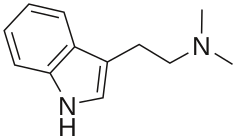
Back روك سايكدلي Arabic سايكيديلك روك ARZ Psixodelik rok Azerbaijani Псіхадэлічны рок Byelorussian Псыхадэлічны рок BE-X-OLD Психеделичен рок Bulgarian সাইকেডেলিক রক Bengali/Bangla Rock psicodèlic Catalan ڕۆکی ھەلوەسەبزوێن CKB Psychedelický rock Czech
| Psychedelic rock | |
|---|---|
 Jimi Hendrix on stage at Gröna Lund in Stockholm, Sweden in June 1967 | |
| Stylistic origins | |
| Cultural origins | Mid 1960s, United States and United Kingdom |
| Derivative forms | |
| Subgenres | |
| Fusion genres | |
| Regional scenes | |
| Local scenes | |
| Other topics | |
| Part of a series on |
| Psychedelia |
|---|
 |
Psychedelic rock is a rock music genre that is inspired, influenced, or representative of psychedelic culture, which is centered on perception-altering hallucinogenic drugs. The music incorporated new electronic sound effects and recording techniques, extended instrumental solos, and improvisation.[2] Many psychedelic groups differ in style, and the label is often applied spuriously.[3]
Originating in the mid-1960s among British and American musicians, the sound of psychedelic rock invokes three core effects of LSD: depersonalization, dechronicization (the bending of time), and dynamization (when fixed, ordinary objects dissolve into moving, dancing structures), all of which detach the user from everyday reality.[3] Musically, the effects may be represented via novelty studio tricks, electronic or non-Western instrumentation, disjunctive song structures, and extended instrumental segments.[4] Some of the earlier 1960s psychedelic rock musicians were based in folk, jazz, and the blues, while others showcased an explicit Indian classical influence called "raga rock". In the 1960s, there existed two main variants of the genre: the more whimsical, surrealist British psychedelia and the harder American West Coast "acid rock". While "acid rock" is sometimes deployed interchangeably with the term "psychedelic rock", it also refers more specifically to the heavier, harder, and more extreme ends of the genre.
The peak years of psychedelic rock were between 1967 and 1969, with milestone events including the 1967 Summer of Love and the 1969 Woodstock Festival, becoming an international musical movement associated with a widespread counterculture before declining as changing attitudes, the loss of some key individuals, and a back-to-basics movement led surviving performers to move into new musical areas. The genre bridged the transition from early blues and folk-based rock to progressive rock and hard rock, and as a result contributed to the development of sub-genres such as heavy metal. Since the late 1970s it has been revived in various forms of neo-psychedelia.
- ^ Hoffmann 2004, p. 1725, "Psychedelia was sometimes referred to as 'acid rock.'"; Nagelberg 2001, p. 8, "acid rock, also known as psychedelic rock"; DeRogatis 2003, p. 9, "now regularly called 'psychedelic' or 'acid'-rock"; Larson 2004, p. 140, "known as acid rock or psychedelic rock"; Romanowski & George-Warren 1995, p. 797, "Also known as 'acid rock' or the 'San Francisco Sound'".
- ^ Cite error: The named reference
PrownNewquist48was invoked but never defined (see the help page). - ^ a b Hicks 2000, p. 63.
- ^ Hicks 2000, pp. 63–66.